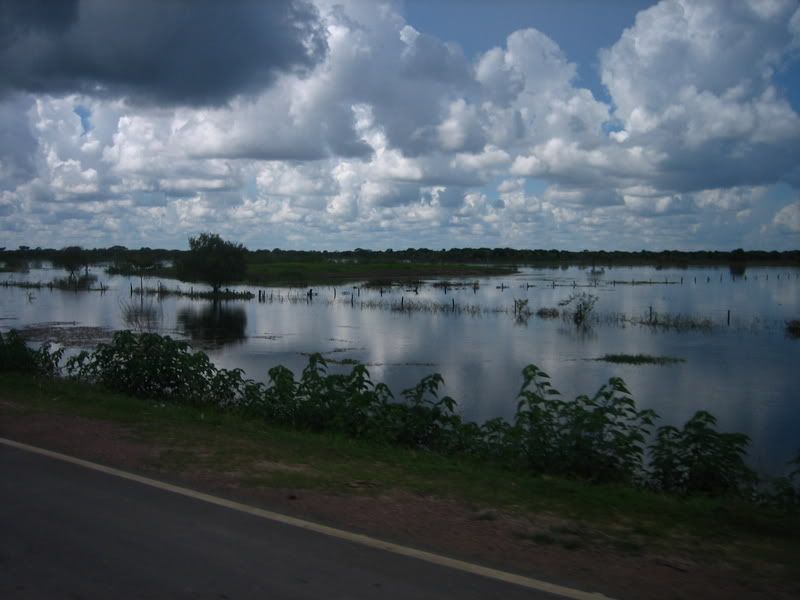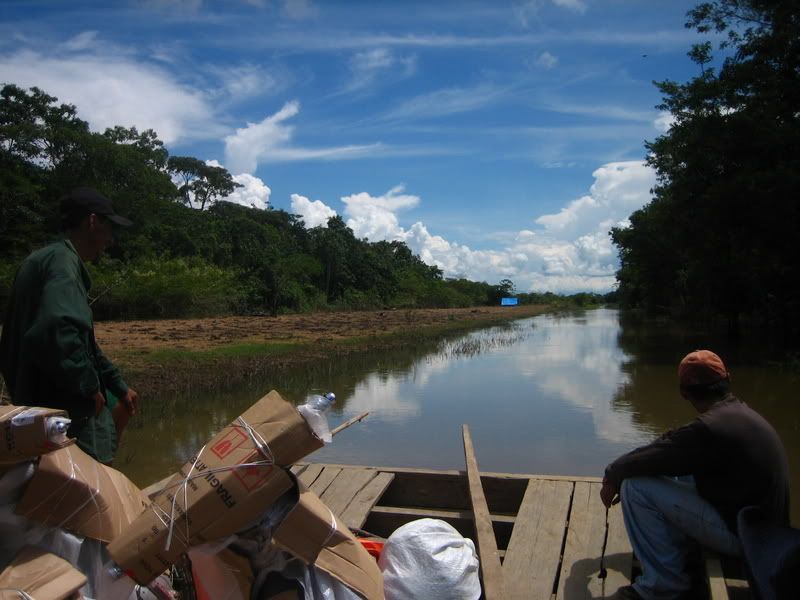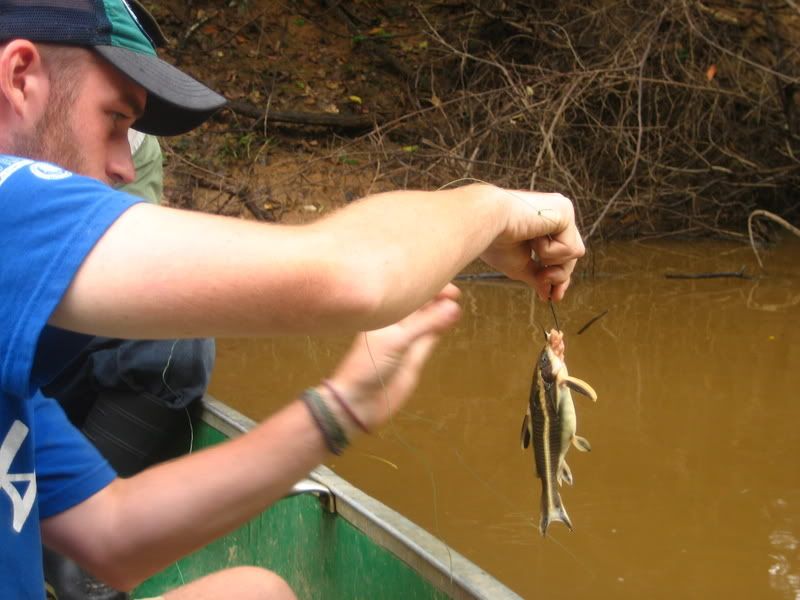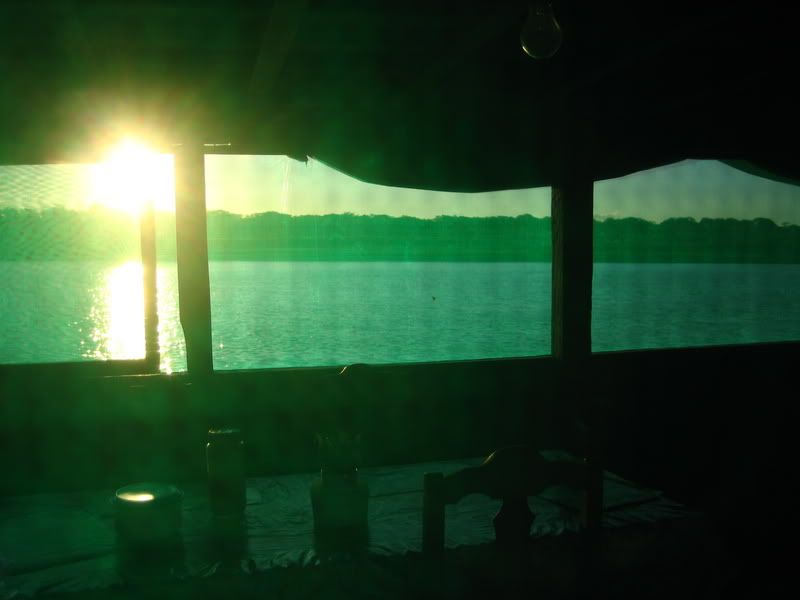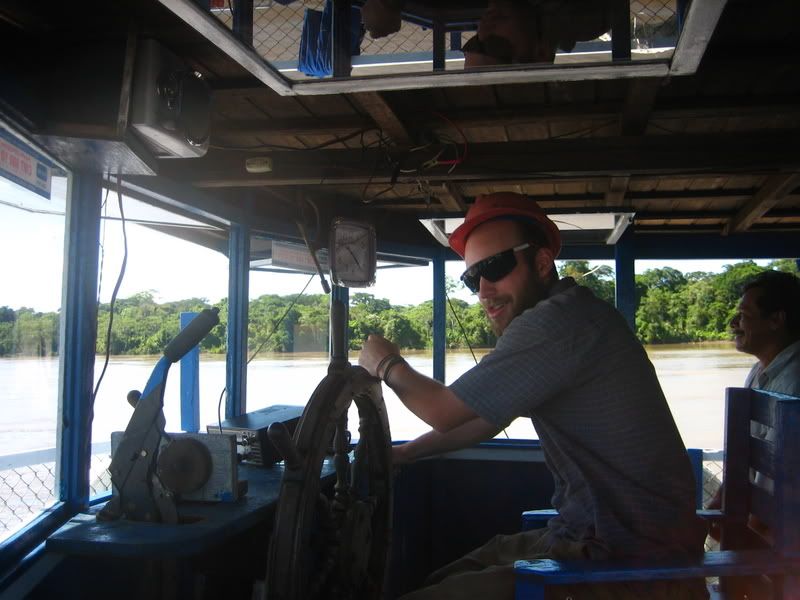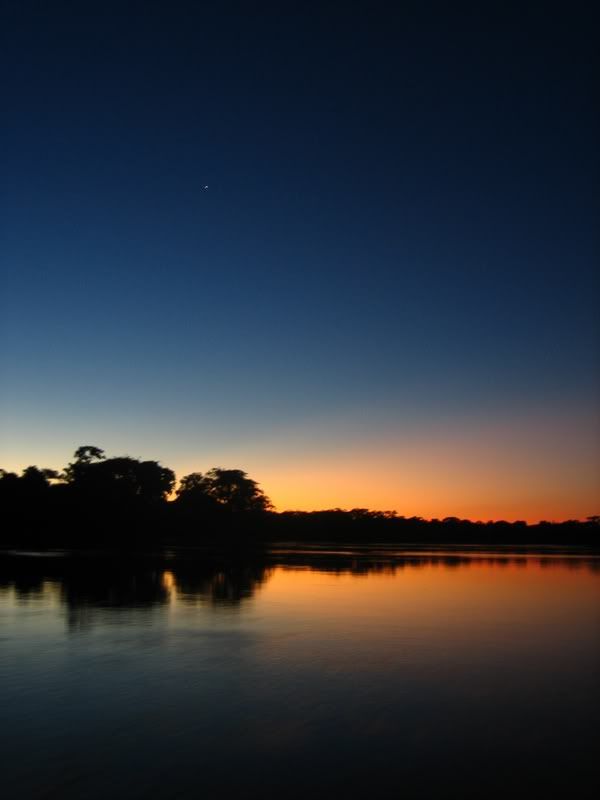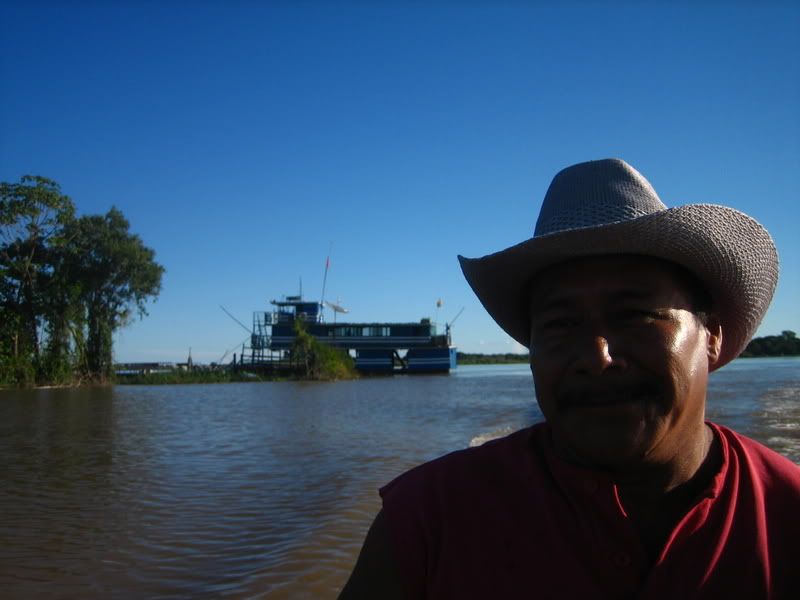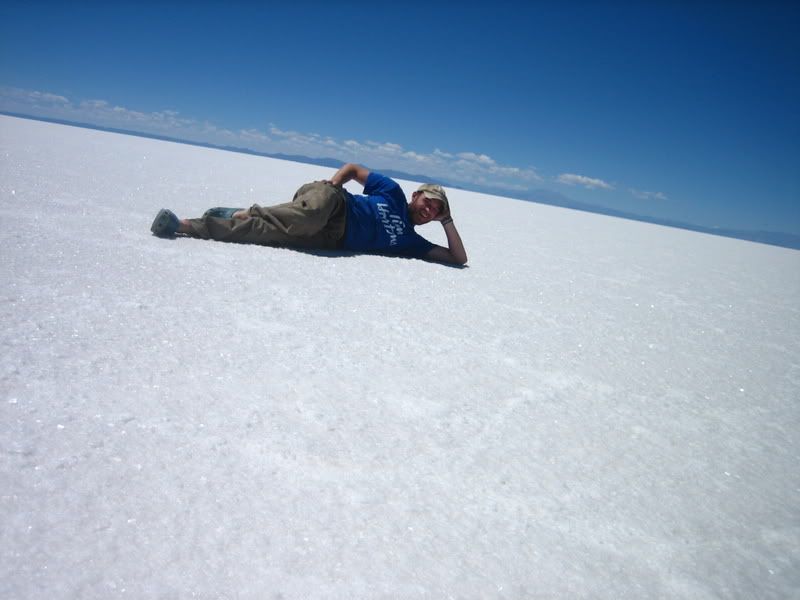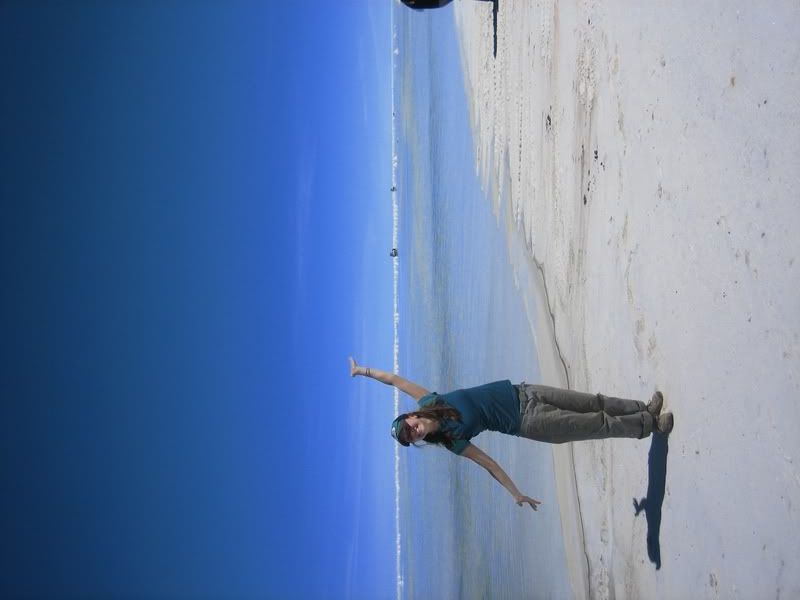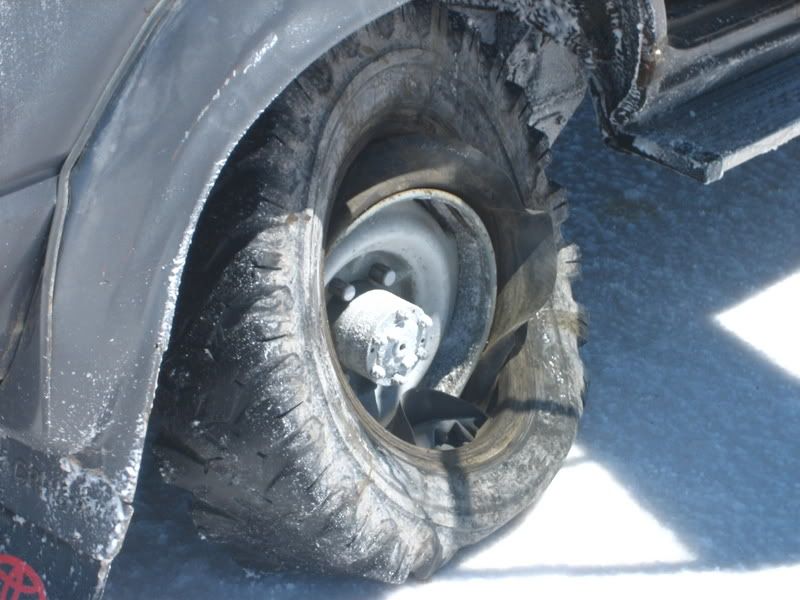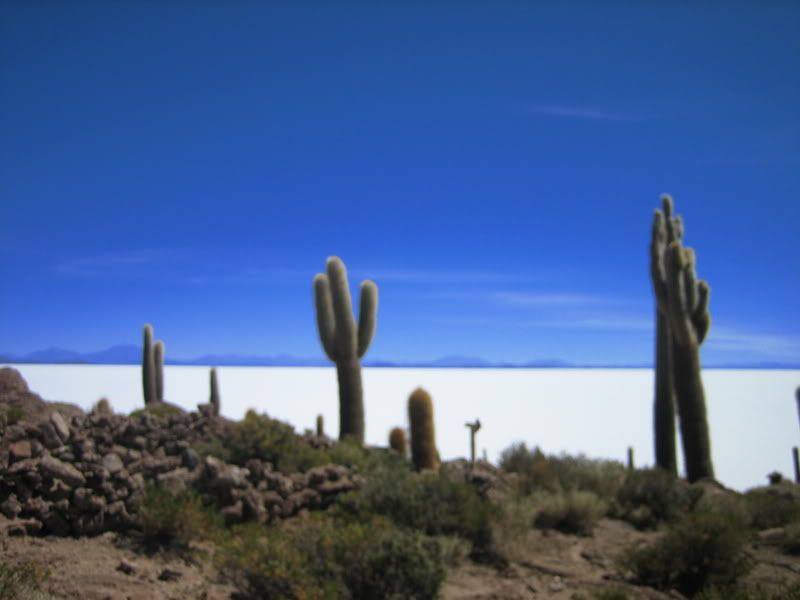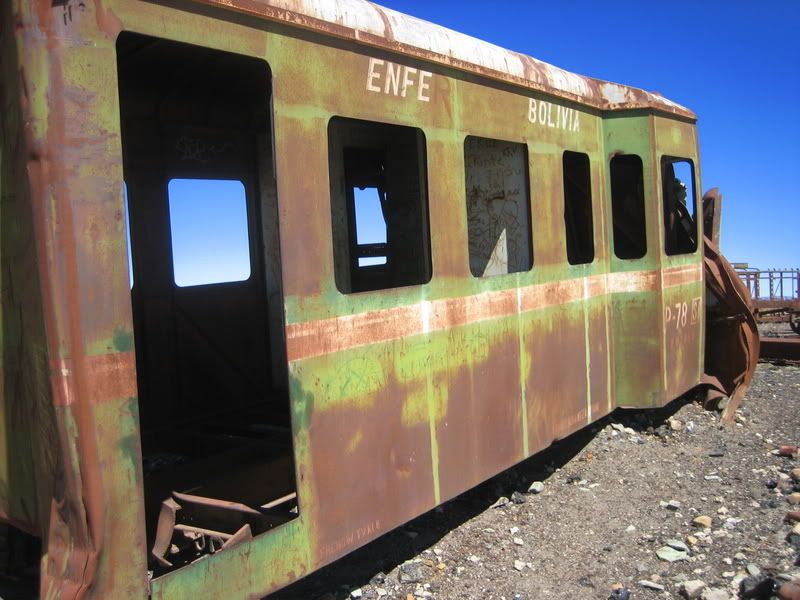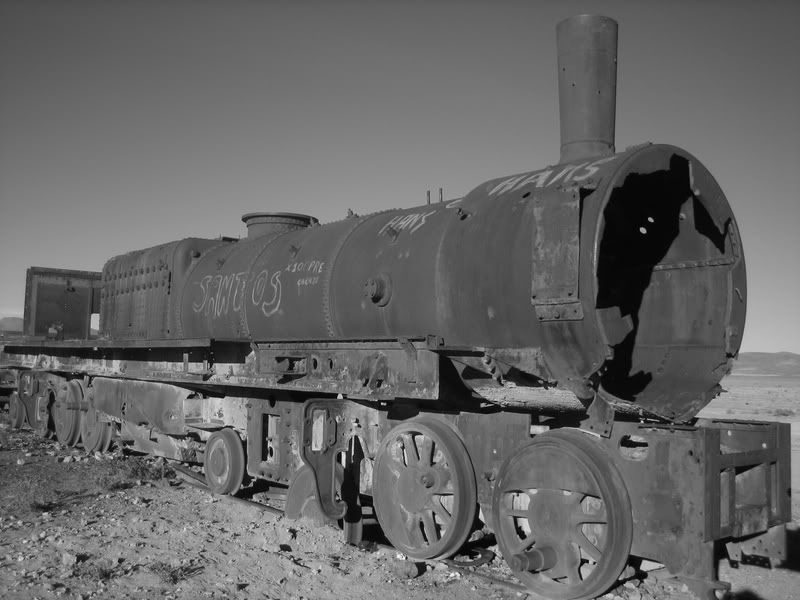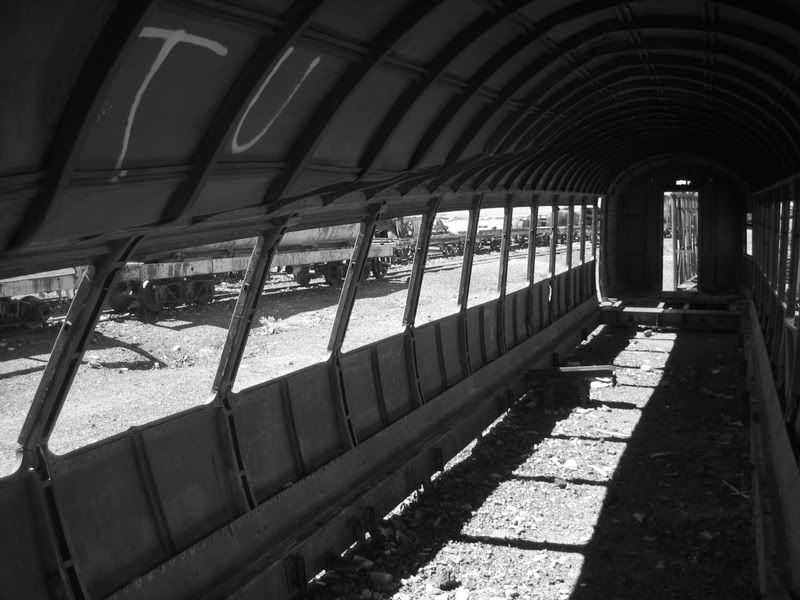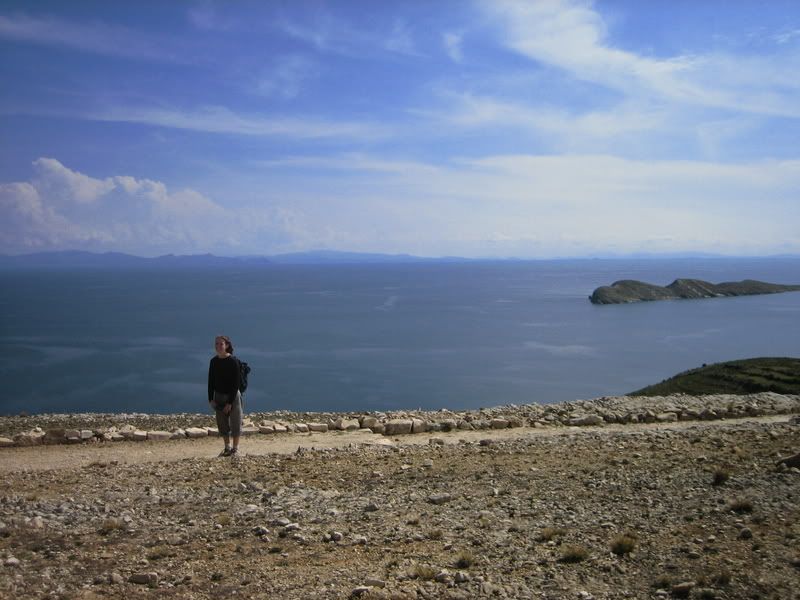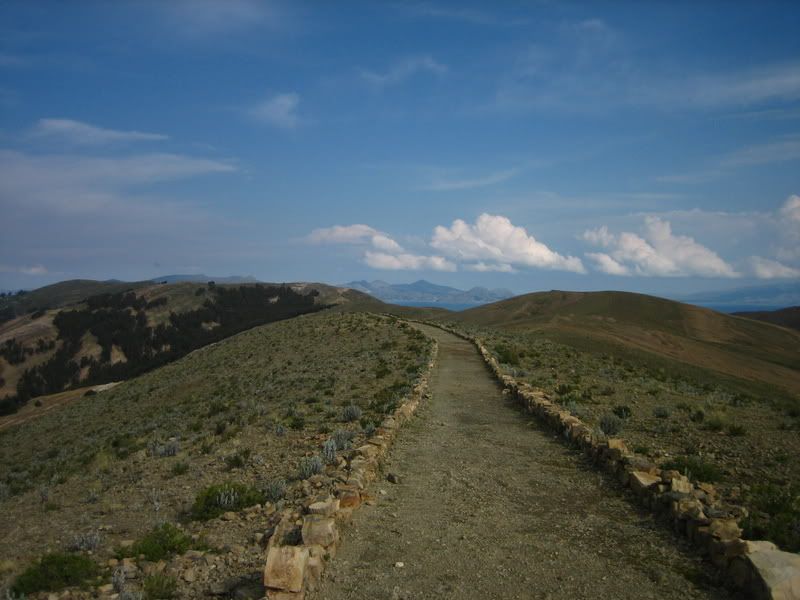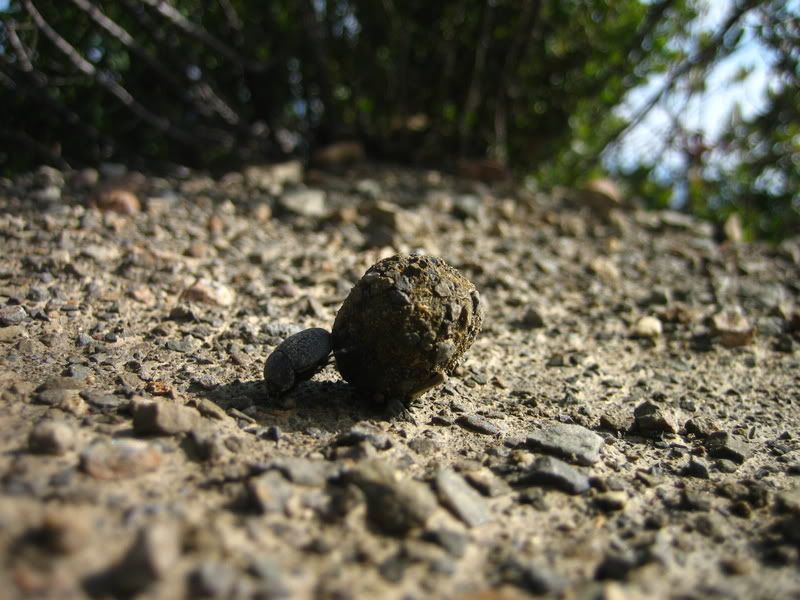Monkey heaven!
 Or something like it...
Or something like it...
We just got back this morning from Chalalan Eco-Lodge. We spent the last four days hiking around the jungle, seeing the most bizarre trees and plants, canoeing around at night searching for black caimans and snakes, and searching the tree tops for monkeys.
The lodge is located far up the Beni and Tuichi rivers in Madidi National Park and is run by a local indigenous community. Rather than get pushed off their land by the government, this community worked to create sustainable tourism in the area. With their help, Madidi National Park was also created in 2000. All the staff and guides are from the village of San Jose de Uchupiamonas and 100 percent of the profits go to the community too.
We were met at our hostal early in the morning by our guide, Sandro. He was one of the original guides from when the lodge was created, so we felt lucky to have a guide with so much experience and knowledge taking us around. We went down to the river bank of the Beni river where we loaded onto our long, motorised boat for the five hour trip up stream. As the boat struggled against the current, we sat back and watched the shoreline for animals and birds. We saw several capybaras (a large rodent) feeding on the shore, and even saw one swimming across river. The boat finally pulled up onto a clay beach, and sleepy from napping, we hiked the two kilometers through the jungle to the lodge. Not long after we started walking, our guide was pulling our arm, saying 'look, look' and pointing up into the trees. We saw a toucan and some capuchin monkeys within our first ten minutes!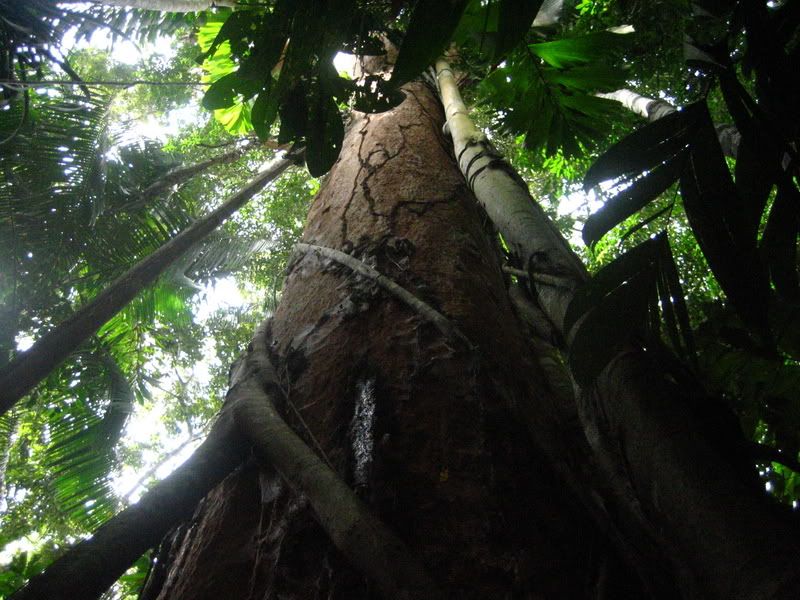 After dropping our bags in the cleanest cabins we've seen this whole trip, we had a late lunch in the dinning hall, where we had dinner forks and salad forks, and plates were always given to you from your right, but taken away on the left (etiquette we are not used to). We were given the afternoon to rest and unpack and before dinner we met Sandro for an introductory walk through the jungle and a canoe ride (in style). As we were being paddled around the lake, on the shores we saw tiny yellow squirrel monkeys jumping from bush to bush as they fed on fruit.
After dropping our bags in the cleanest cabins we've seen this whole trip, we had a late lunch in the dinning hall, where we had dinner forks and salad forks, and plates were always given to you from your right, but taken away on the left (etiquette we are not used to). We were given the afternoon to rest and unpack and before dinner we met Sandro for an introductory walk through the jungle and a canoe ride (in style). As we were being paddled around the lake, on the shores we saw tiny yellow squirrel monkeys jumping from bush to bush as they fed on fruit.
Our Evening Program that night was a night hike, searching for tarantulas (we saw a baby one) and other night creatures. I found myself searching the forest floor and path for spiders and snakes and 24hour ants, not wanting to step on anything. Especially after all the warning from Sandro about the dangers in the jungle.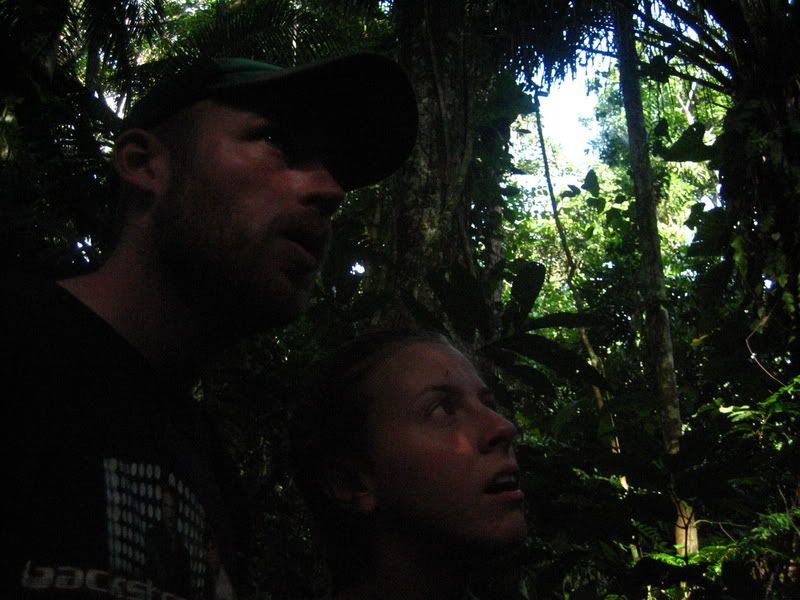 The second day we woke to the distance howls of red howler monkeys, sounds like a dinosaur way off in the jungle. We hiked with Sandro all day, for only about 8 kilometers, but we walked at a slow pace and stopped frequently to peer through the trees for wildlife. Often, we would see Sandro pause and raise his finger to his lips to make the loud call of the black spider monkey. Once they responded, but unfortunately they did not come to defend their territory, like we were told they might. We would stalk through the forest after our guide desperately trying to see the animals he knew were there, but by the end of the day we saw two different groups of red howler monkeys peering down at us from way, way up in the trees. That night we went on a night canoe ride and saw a few black caimans and two different kinds of boas before heading to bed.
The second day we woke to the distance howls of red howler monkeys, sounds like a dinosaur way off in the jungle. We hiked with Sandro all day, for only about 8 kilometers, but we walked at a slow pace and stopped frequently to peer through the trees for wildlife. Often, we would see Sandro pause and raise his finger to his lips to make the loud call of the black spider monkey. Once they responded, but unfortunately they did not come to defend their territory, like we were told they might. We would stalk through the forest after our guide desperately trying to see the animals he knew were there, but by the end of the day we saw two different groups of red howler monkeys peering down at us from way, way up in the trees. That night we went on a night canoe ride and saw a few black caimans and two different kinds of boas before heading to bed.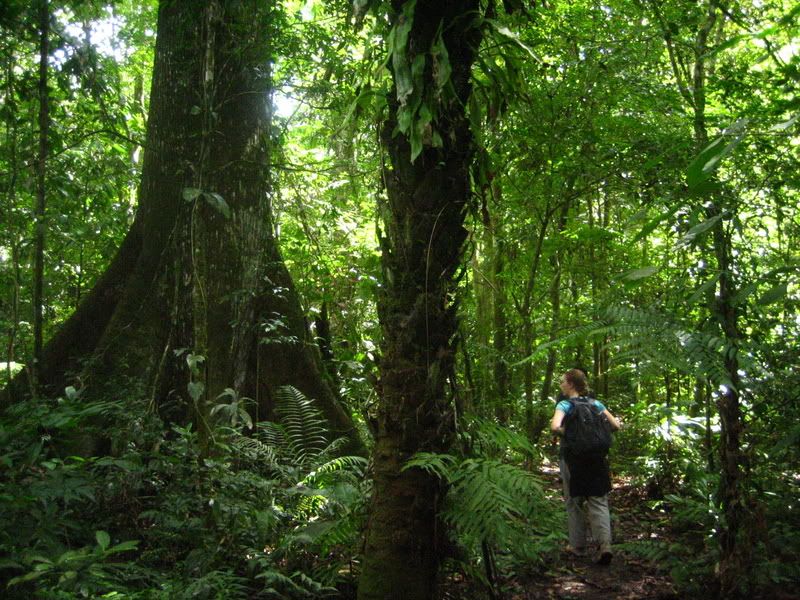 Sadly it rained hard for most of the next day, so we played one giant game of gin-rummy. (It was the most expensive rainy day card game we've ever played). We finally went tramping around the wet jungle in borrowed rubber boots, and saw a few more red howler monkeys (who looked very wet).
Sadly it rained hard for most of the next day, so we played one giant game of gin-rummy. (It was the most expensive rainy day card game we've ever played). We finally went tramping around the wet jungle in borrowed rubber boots, and saw a few more red howler monkeys (who looked very wet).
We woke very early this morning and went for a canoe ride to watch the fog rise from the forest. Heard some more monkeys and watched many birds eating breakfast before heading back for our own. The trip back to Rurre took on two hours and we are here awaiting a flight.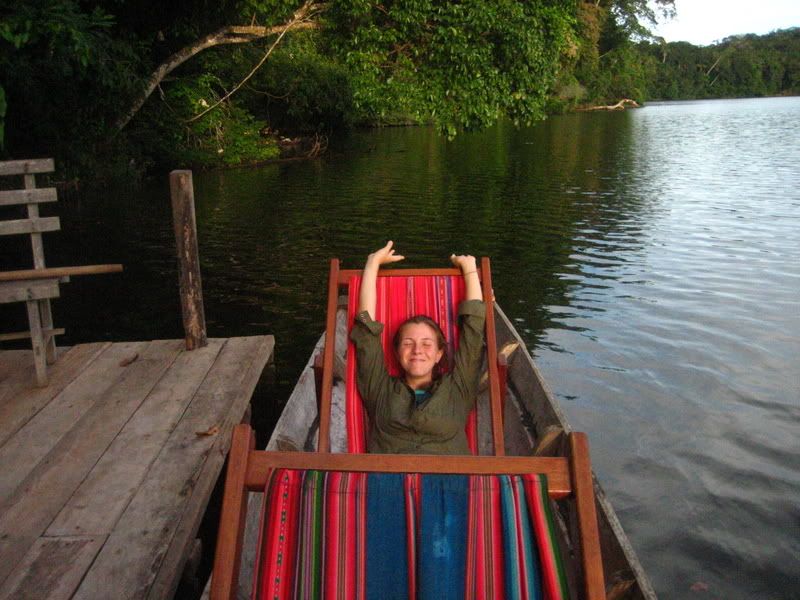 We learned so many amazing things on our trip, like about a vine's poisonous sap that the villagers used to use to kill fish in the river, and about snakes who wait alongside a long-rooted palm at night for the next mouse to come eat the tree's seeds. The jungle was so diverse and interesting, it was hard to keep up with Sandro some times (even with his slow pace) because there was so much to look at.
We learned so many amazing things on our trip, like about a vine's poisonous sap that the villagers used to use to kill fish in the river, and about snakes who wait alongside a long-rooted palm at night for the next mouse to come eat the tree's seeds. The jungle was so diverse and interesting, it was hard to keep up with Sandro some times (even with his slow pace) because there was so much to look at.
If you ever get the chance... go see the jungle!
Two more videos too!
The road out of Trinidad last week. You can see the makeshift homes people have made when the flood displaced them back in January.
Ants!
